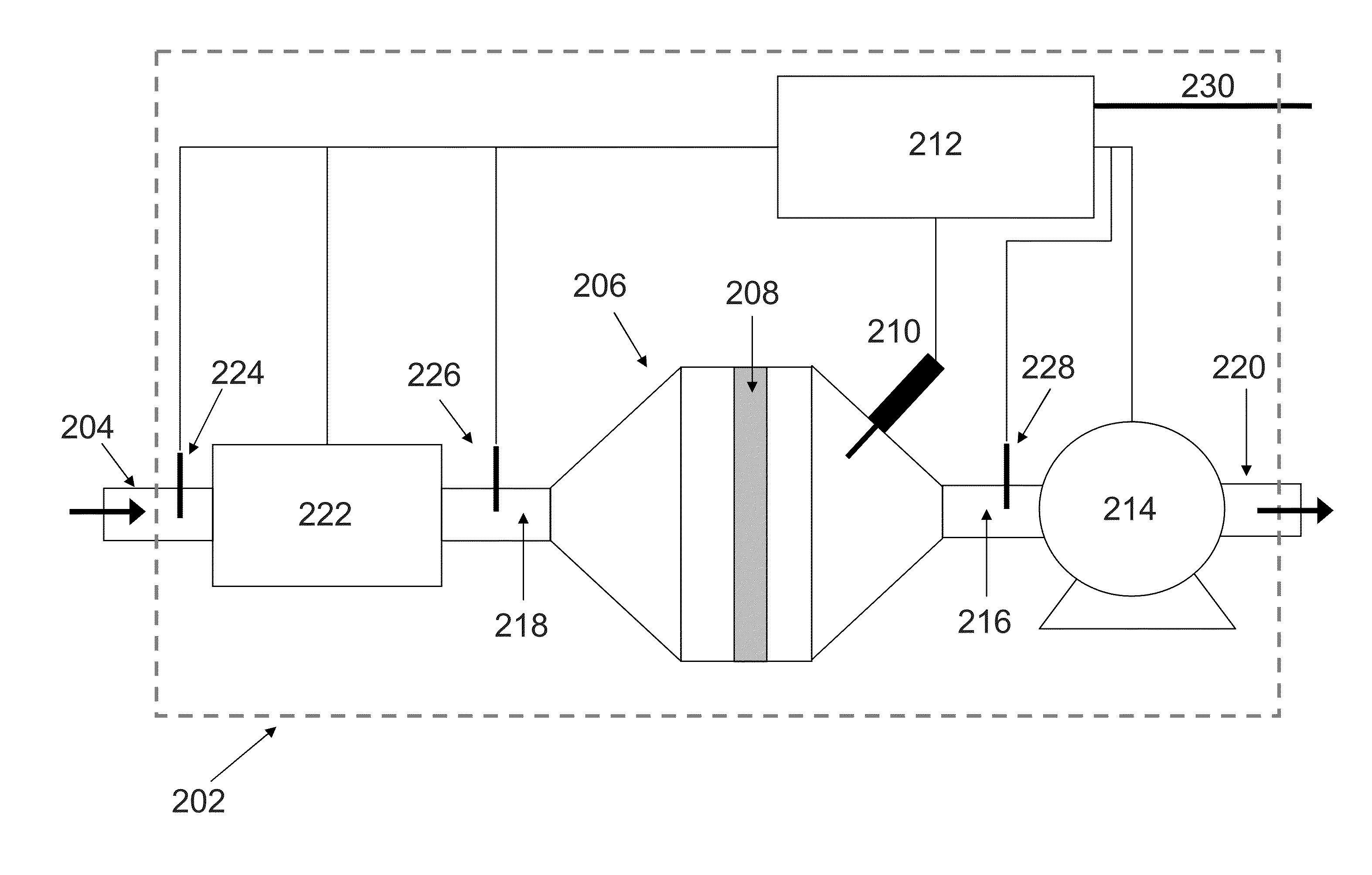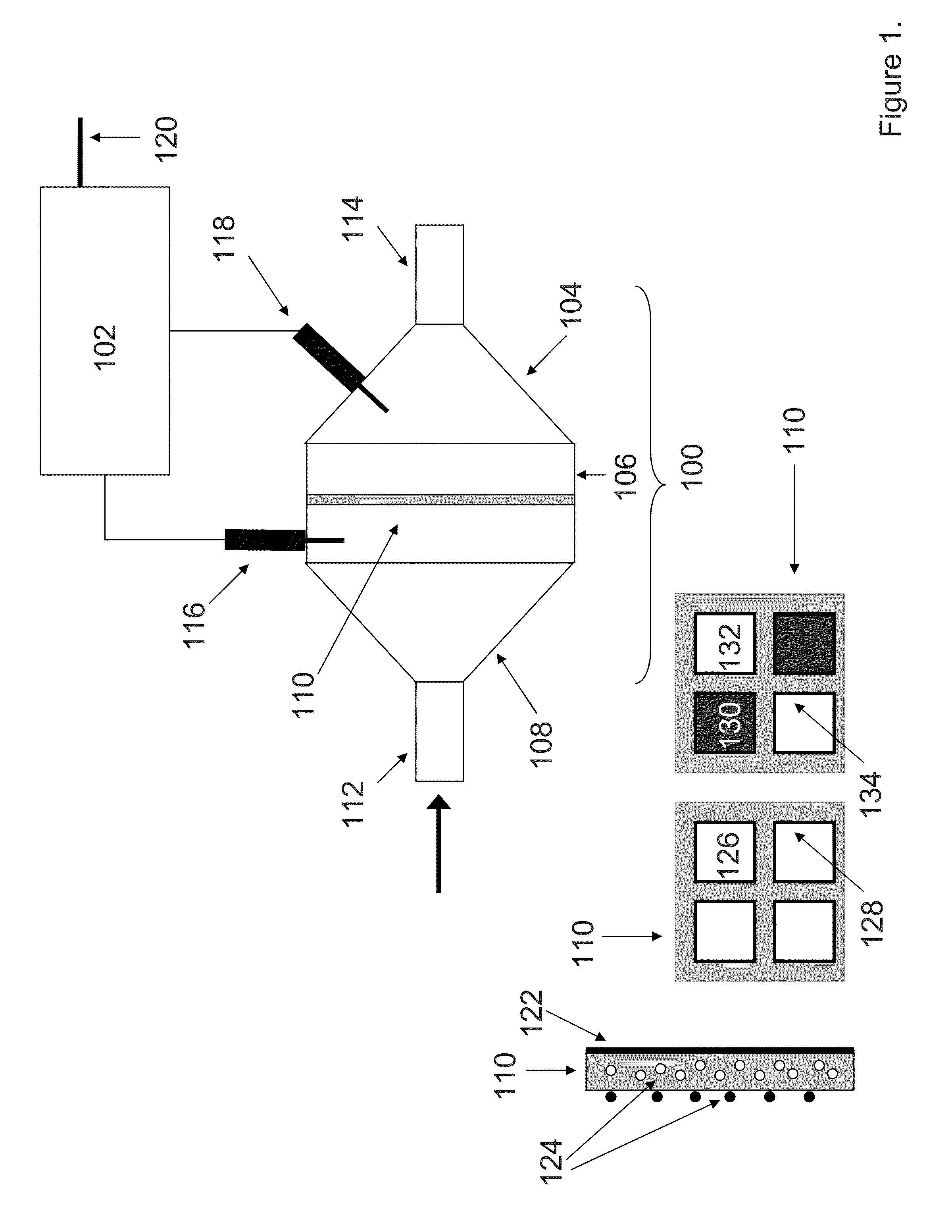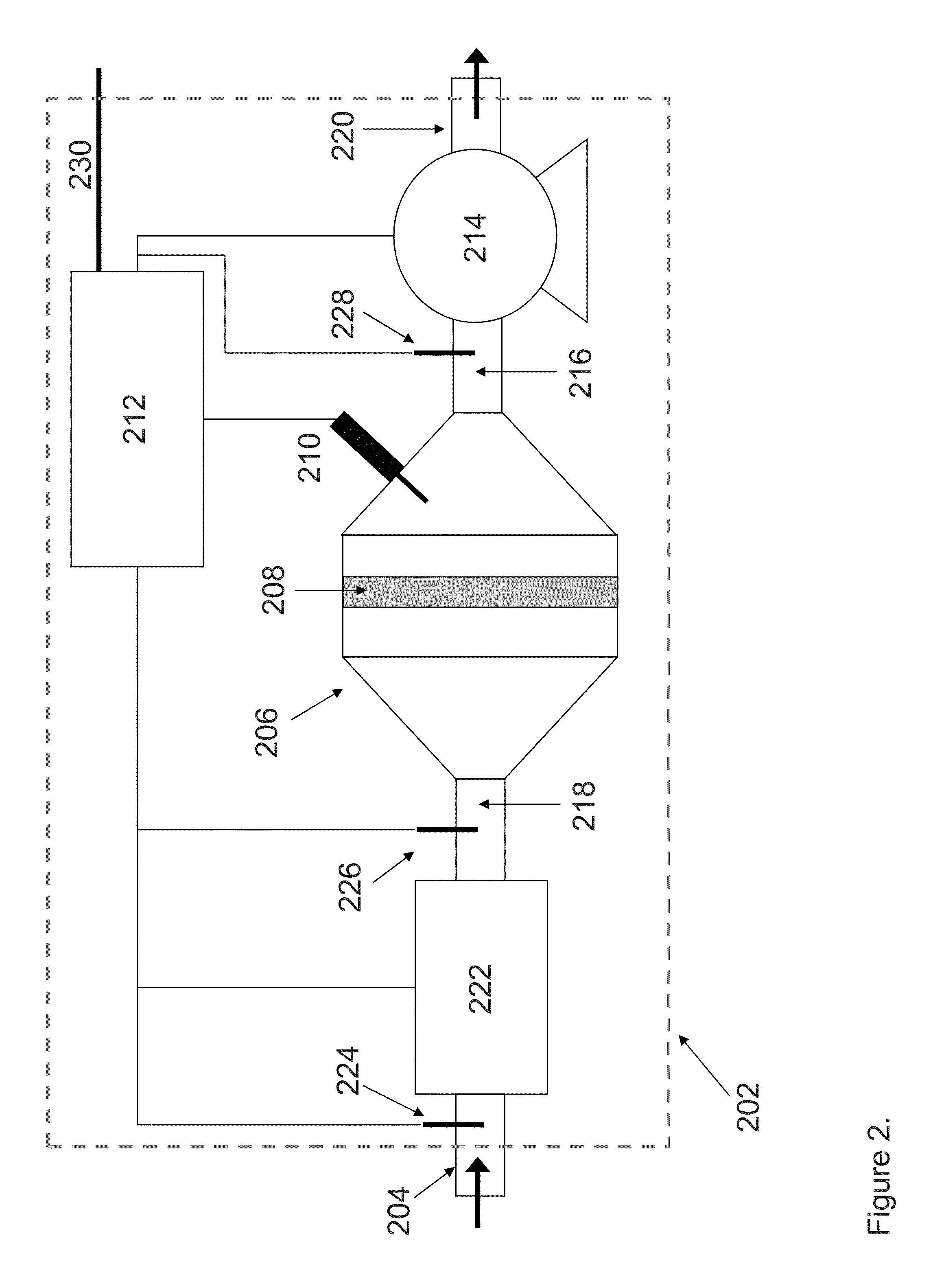Radio Frequency State Variable Measurement System And Method
a measurement system and frequency state technology, applied in the direction of resistance/reactance/impedence, instruments, measurement devices, etc., can solve the problems of affecting the accuracy of measurement, complex, cumbersome measures to mitigate, and the variability of cavity and waveguide measurement systems, so as to reduce measurement variability, improve measurement accuracy, and reduce measurement response time
- Summary
- Abstract
- Description
- Claims
- Application Information
AI Technical Summary
Benefits of technology
Problems solved by technology
Method used
Image
Examples
Embodiment Construction
[0038]FIG. 1 depicts a cavity measurement system according to one embodiment. A measurement cavity 100 is made up of a housing 106, which may or may not contain an internal element 110. The internal element 110, if present, may be a filter, membrane, ceramic substrate, catalyst support, or the like. The housing 106 may be connected to conduits 112 or 114, such as pipes, tubes, or ducts to direct a flow or sample into housing 106 by means of coupling elements 108 and 104, which may be cones. The coupling elements 108 and 104 and conduits 112 and 114 may or may not be present. In another embodiment, the ends of housing 106 may be closed.
[0039]One or more radio frequency probes 116 and 118 may be installed in housing 106, coupling elements 104 or 108, or otherwise suitably positioned to transmit or receive radio frequency signals in housing 106. The transmitted and received signals may be used to generate and sample one or more resonant modes in the measurement cavity 100. Meshes or sc...
PUM
| Property | Measurement | Unit |
|---|---|---|
| diameter | aaaaa | aaaaa |
| size | aaaaa | aaaaa |
| frequency | aaaaa | aaaaa |
Abstract
Description
Claims
Application Information
 Login to View More
Login to View More - R&D
- Intellectual Property
- Life Sciences
- Materials
- Tech Scout
- Unparalleled Data Quality
- Higher Quality Content
- 60% Fewer Hallucinations
Browse by: Latest US Patents, China's latest patents, Technical Efficacy Thesaurus, Application Domain, Technology Topic, Popular Technical Reports.
© 2025 PatSnap. All rights reserved.Legal|Privacy policy|Modern Slavery Act Transparency Statement|Sitemap|About US| Contact US: help@patsnap.com



